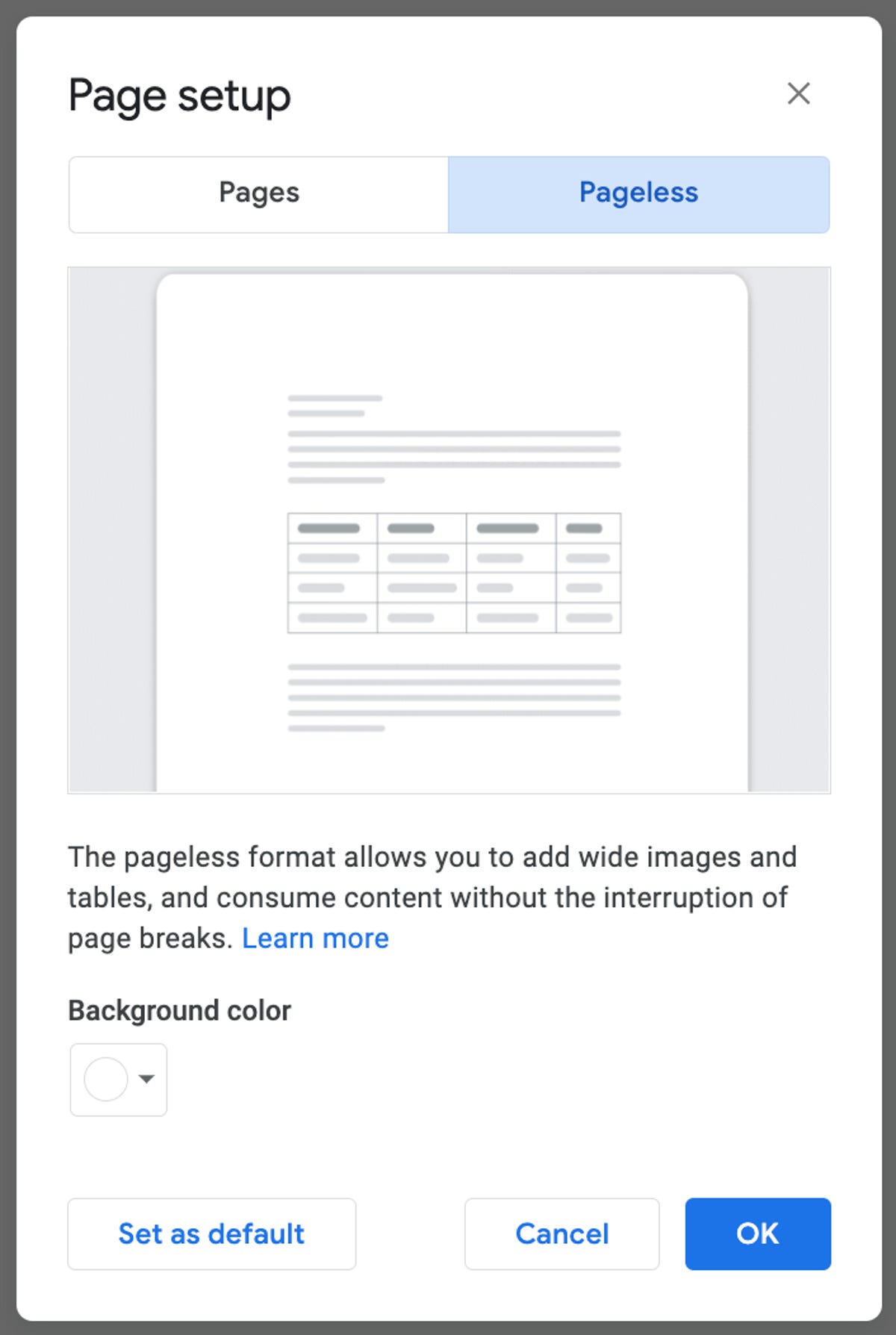The Google Docs features I’ve always wished for are now real
I have had to use Google Docs in almost every professional environment for more than a decade. There was always a handful of features whose lack in the otherwise hyper-flexible text editor felt like a sore thumb. However, I had no idea that Google has gradually released many of these hoped-for helpers over the past few years. Ever since I found them, they have made my work life easier.

Pageless formatting, document watermarking, and the ability to compare long and nearly identical documents? Are you kidding me? What have I done without these? Spare yourself the headache I suffered and check out these four features every long-time Google Docs user needs to know.
Continue reading: With these 6 functions, Google wants to help you work more efficiently
How to switch to pageless format in Google Docs
For many authors used to Microsoft Word’s flexible formatting, one of the most frustrating things about Google Docs has been the inability to quickly switch from page-based formatting to a pageless flow that better reflects the realities of online publishing. But as of February 2022, you can say goodbye to page breaks and jagged image insertions with Google Docs’ pageless formatting feature.
1. In an open Google Doc, select file.
2. Select from the menu below book page configuration.
3. At the top of the new menu that opens, select the sideless Tab.

Here’s what you can see under Page Setup in Google Docs.
CNET/Screenshot
Continue reading: Don’t just comment in Google Docs. Respond to text with emoji too
How to watermark your Google Docs
A crucial step for anyone distributing documents outside of a known circle of collaborators—and a great way to ensure your designs stay credited after a change of ownership—is watermarking your documents, especially if you plan on converting them to PDF export.
1. Select in your Google Doc insertion from the top menu.
2. Click further down in the menu watermark.
3. A new window will appear on the right side of your document where you can now choose what type of watermark to include – whether it’s text you create or an image you choose.
4. click Finished.
How to set up a watermark on your document.
CNET/Screenshot
Continue reading: TL;DR? Google Docs is said to contain automatically generated summaries
How to compare two similar Google Docs to find differences
When working with Google Docs, the ultimate frustration can be trying to figure out what a collaborator changed on the latest version of a long text after giving you a second document full of text. But a lesser-known feature of Google Docs can turn this previously nightmarish process into a three-click solution.
1. In an open Google Doc, select Tool from the top menu.
2. Click in the drop-down menu Compare documents.
3. A new window is opening up. From here you can select another document from your drive to compare to your currently open Google Doc. You can also select an additional field in the window to pick up comments from the selected document.

How to start comparing documents.
CNET/Screenshot
Continue reading: Google Drive almost full? Here are some tips to free up space
How to add a bookmark to a long Google Doc
Comparing longer documents is tedious, but trying to remember where you left off reading or editing a longer document is even worse. While not new, the Google Docs bookmarks feature is one of the lesser-known and more helpful.
1. In your open Google Doc, click your cursor where you want to bookmark.
2. Choose insertion from the top menu.
3. Find and select in the drop down menu below bookmark.
4. A small bookmark icon will appear in your Google Doc text where your cursor is. From here you can click on the adjacent copy icon. A URL has now been copied to your clipboard which will take you back to the bookmark if you paste that link into a new tab or window. Practically!

A bookmark in a Google Doc.
CNET/Screenshot
Continue reading: Google Drive Tips and Tricks: 9 Features You May Have Missed


Comments are closed.